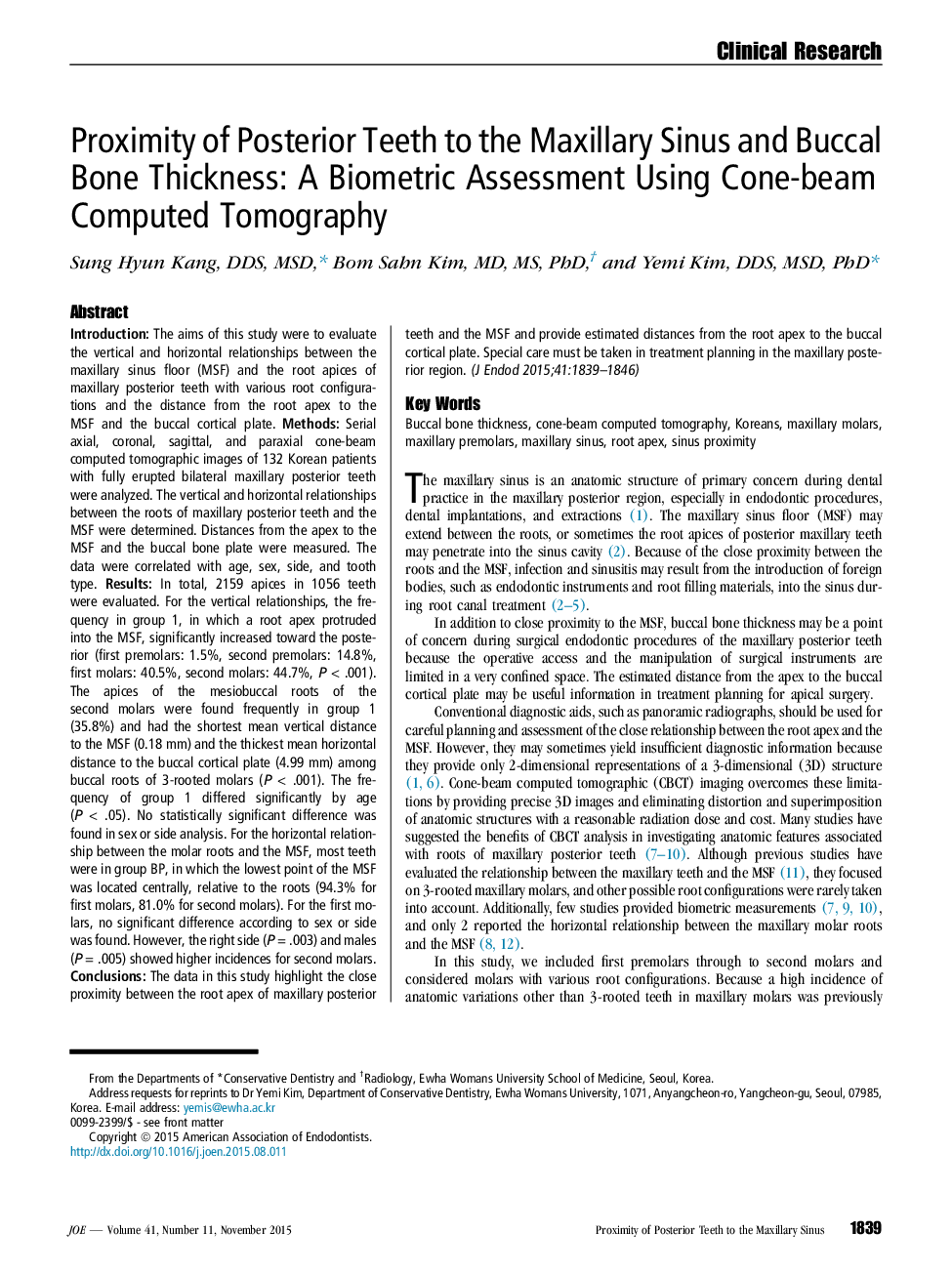| کد مقاله | کد نشریه | سال انتشار | مقاله انگلیسی | نسخه تمام متن |
|---|---|---|---|---|
| 3146554 | 1197294 | 2015 | 8 صفحه PDF | دانلود رایگان |
IntroductionThe aims of this study were to evaluate the vertical and horizontal relationships between the maxillary sinus floor (MSF) and the root apices of maxillary posterior teeth with various root configurations and the distance from the root apex to the MSF and the buccal cortical plate.MethodsSerial axial, coronal, sagittal, and paraxial cone-beam computed tomographic images of 132 Korean patients with fully erupted bilateral maxillary posterior teeth were analyzed. The vertical and horizontal relationships between the roots of maxillary posterior teeth and the MSF were determined. Distances from the apex to the MSF and the buccal bone plate were measured. The data were correlated with age, sex, side, and tooth type.ResultsIn total, 2159 apices in 1056 teeth were evaluated. For the vertical relationships, the frequency in group 1, in which a root apex protruded into the MSF, significantly increased toward the posterior (first premolars: 1.5%, second premolars: 14.8%, first molars: 40.5%, second molars: 44.7%, P < .001). The apices of the mesiobuccal roots of the second molars were found frequently in group 1 (35.8%) and had the shortest mean vertical distance to the MSF (0.18 mm) and the thickest mean horizontal distance to the buccal cortical plate (4.99 mm) among buccal roots of 3-rooted molars (P < .001). The frequency of group 1 differed significantly by age (P < .05). No statistically significant difference was found in sex or side analysis. For the horizontal relationship between the molar roots and the MSF, most teeth were in group BP, in which the lowest point of the MSF was located centrally, relative to the roots (94.3% for first molars, 81.0% for second molars). For the first molars, no significant difference according to sex or side was found. However, the right side (P = .003) and males (P = .005) showed higher incidences for second molars.ConclusionsThe data in this study highlight the close proximity between the root apex of maxillary posterior teeth and the MSF and provide estimated distances from the root apex to the buccal cortical plate. Special care must be taken in treatment planning in the maxillary posterior region.
Journal: Journal of Endodontics - Volume 41, Issue 11, November 2015, Pages 1839–1846
